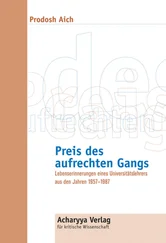In fact, this should have not only led to the collapse of the theory of the Aryan conquest, but also of the theory which claims that India is a country of two or three races. But ‘ mostly one followed ’ the flexibility of the “historians” and indologists: If there was no conquest, then there must nevertheless have been immigration! By this twist the theory of the “superior Aryan race” was rescued. These “Indo-Europeans”, no, these “Aryan-Europeans”, were and are emotionally convinced of their own superiority. What would happen to them if the theory of the “Aryans” falls? It is beyond our imagination.
These manipulators of opinions know very well how deeply the racial consciousness is rooted in this “blond-blue-eyed-white-Christian” culture, which is still on the search for an innocent name. They are confident that even if they have to use the term “immigration” it will nonetheless automatically be converted in the mind of the members of this culture into “conquest”. And their confidence has no limits. They do not even feel that while writing a little more attention has to be paid to keep their innermost conviction about the superiority of the “Aryan-Europeans” under restrain, lest it be exposed by carelessness. Thus we can already read on page 50 of the 2nd section: “ The victory of the Indo–Aryas over the indigenous population seems to have been as in the case of other conquering nations in the Near Orient, based considerably on their sophisticated two wheeled horse chariots (ratha). The spokes of their wheels were so valuable and sensitive that the chariots were carried occasionally on ox carts in order to spare them until the beginning of the battle. The land taking of the Aryas seems nevertheless to have been carried out only in a step-by-step manner and slowly. The reason for that might have lain indeed also in the width of the country and in the great number of hardly passable rivers.
The resistance of the indigenous population seems however to have carried more weight. As dark-skinned Dasa or Dasyu they are named in the texts again and again as the real adversaries of the conquerors. They defended themselves in fortified places (pura, later = city) that were mainly surrounded by several palisade rings or ramparts, or they moved back onto the mountains into their retreat-castles. Numerous hymns celebrate the God Indra as the «castle breaker» (purandara) and King of Gods of the Aryas who stormed the castles and killed the Dasyu intoxicated from the Soma drink .”
Apart from the fact that these “historians” and indologists, who, in spite of the archaeological discoveries, let themselves be led by the “race superiority of the Aryans”, our attention is attracted by two other facts that are no less fatal. By insertions of simple Sanskrit words these “scientists” create the impression that they are proficient in Sanskrit. Whether this would correspond to facts, remains to be examined thoroughly. We will systematically track down how Sanskrit and “Vedic Sanskrit” or the one that is just being called Sanskrit came to Europe.
The second aspect is still more pathetic. We recall the part of the quotation: ‘ The resistance of the indigenous population seems however to have carried more weight. As dark-skinned Dasa or Dasyu they are named in the texts again and again as the real adversaries of the conquerors. ’ As already mentioned, in their tales these “historians” and indologists describe the “Aryans” as tall, strong, fair skinned, fair haired, blue or grey-eyed. As these physical characteristics are still positively evaluated and are in flesh and blood those of the members of this culture, we will also trace the time when these physical characteristics were applied to distinguish the quality of human beings and where this theory originated.
Finally, we apologise making a comment on “modern humanities” to reveal their treacherous arts. Since the third quarter of the last century archaeologists in India are laying open entire cities concealed under the earth for millenniums. These cities were planned with coherent settlements, straight roads, play grounds with stadium, efficient water management, public baths, drainage, artificial irrigation plants, channel systems, dry docks and so forth on banks of mighty rivers later dried up by drought. These cities didn’t have palaces and temples. An intensive discussion at least on one issue should have started. Is it conceivable that such a civilisation could exist without a language, without writing, without literature, without science, without philosophy? The answer is obvious. It is not conceivable. Where are those cultural achievements?
And what would happen if we had reasonable doubts about Sanskrit being the language of the ‘ Aryans who immigrated through the mountain route of the Northwest into the watershed of Indus and subjugated in continuous fight the prior residents of the north-west corner of India in the 2nd millennium BC, were warriors of a youthful group of herdsmen, who did already some farming, but knew nothing of town planning and of fine artistic work .’ What are we supposed to do then? What would have to be done?
We actually wanted to know more precisely about “Indogermans”, “Indoeuropeans” and “Aryans”. Who they are, since when has their existence been known, how has it become known that they really did exist, who discovered them, and how, why and for what purpose? Many (hi)stories are told, explanations given and general perspectives are offered, but all these appear to be questionable. They don’t correspond to so many things we observe in our environment and in our world. Therefore we have to put more questions. In the beginning our queries appeared to be simple. Obviously they are not. We have been in search of answers for more than the last five years. We do not find them. No, that would be incorrect. We do find answers, but they are hardly convincing. There are answers, but with lots of catches. The answers lead us immediately to more questions, time and again. It is, as if we had opened the Pandora’s Box with our simple straightforward questions, leading to a seemingly unending chain of questions.
A barrage of questions floods our minds. Much too many contexts still need to be explicated, both in the sphere of “high politics” today as also in the daily life of the common people. Intrigued, we find ourselves asking whether categorisations such as “Indo-Europeans” and “Aryans” are related to the oppression – indeed, the hunt – of foreigners (aliens) in affluent countries. Isn’t it necessary to look into the circumstances under which foreign people are hounded in the rich countries? Are only foreigners being hunted? All foreigners? What is “foreign”? How is it perceived? Where does the foreignness begin? How does a “foreign race” get defined? Can there be persecution of “foreign races" without the concept of “race” being made a basis for social categorisation? What is race? Who has invented “races” and when and in which context? How can “human races” be related to each other, compared and ranked? Again, many stories are told.
Stories abound regarding “the others”, “the strangers”, “the foreigners”, “the aliens”, on their culture, history and backwardness. Is there a relationship between the persecution of foreign people and the speedy transport of all kinds of tales and reports about “the others” carried by the “most modern“ means of transport, through “media” of all kinds? Stories, which are eagerly, consumed everywhere? Consumed? Simply consumed? Or do the stories also create an inner feeling of superiority in us? Being superior to everybody else? Over their poverty, their mishaps and disasters, their inability, their incompetence, their corruption, their arbitrariness in life. Does it not give one a feeling of superiority when compared to social groups like political refugees (or to those who only pose to be so), other refugees and migrants, (both undesirable and useful), people without shelter and those who are labelled as work shy, people who live on social welfare, etc., etc.? Don’t we feel better when we look down to such groups? Are we not better? Haven’t we achieved more than others? Aren’t we the civilised ones? Shouldn’t we feel proud, proud of our achievements?
Читать дальше












